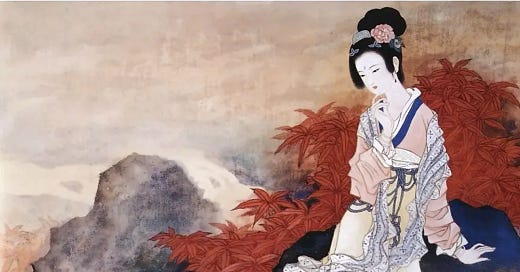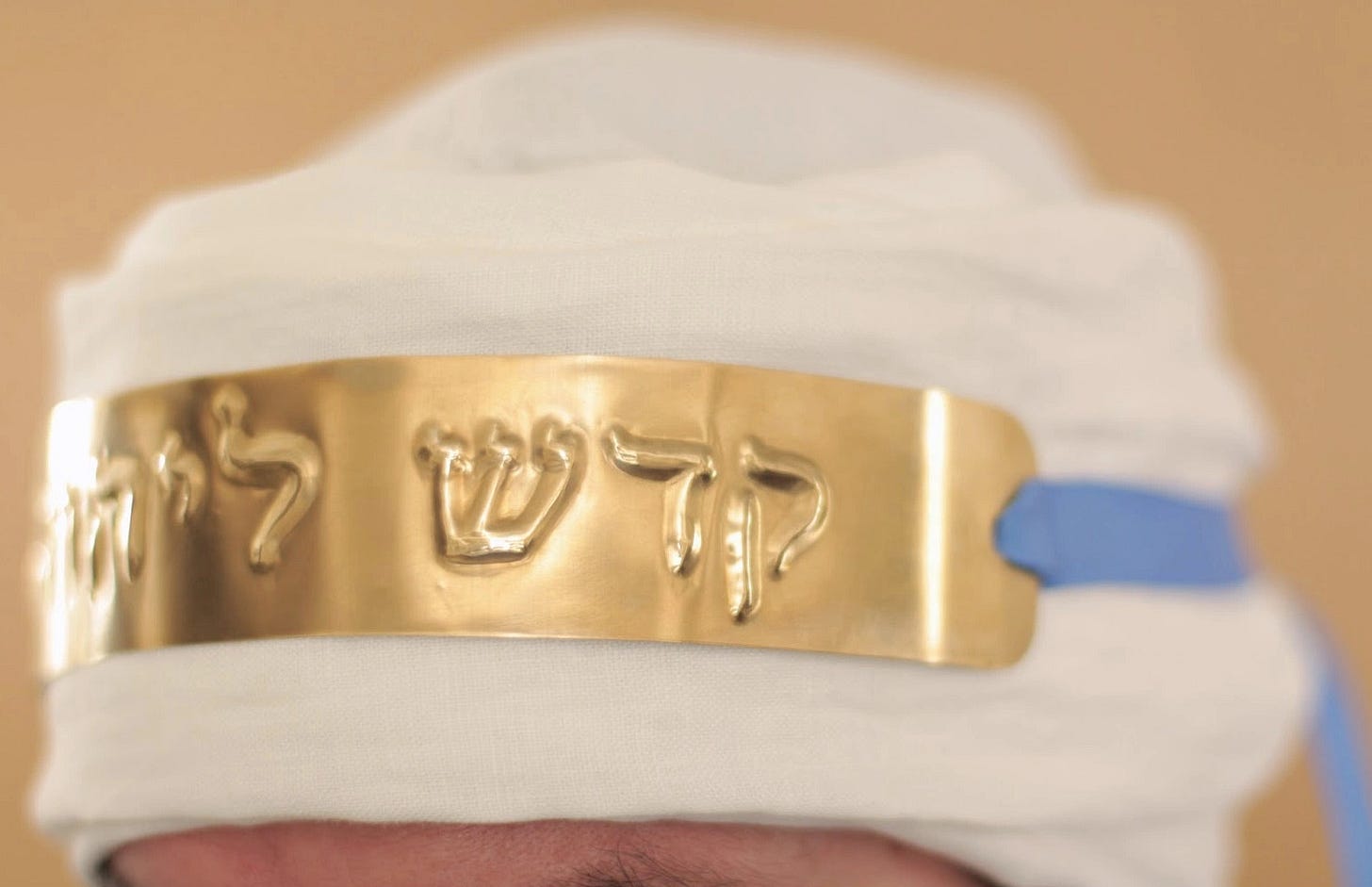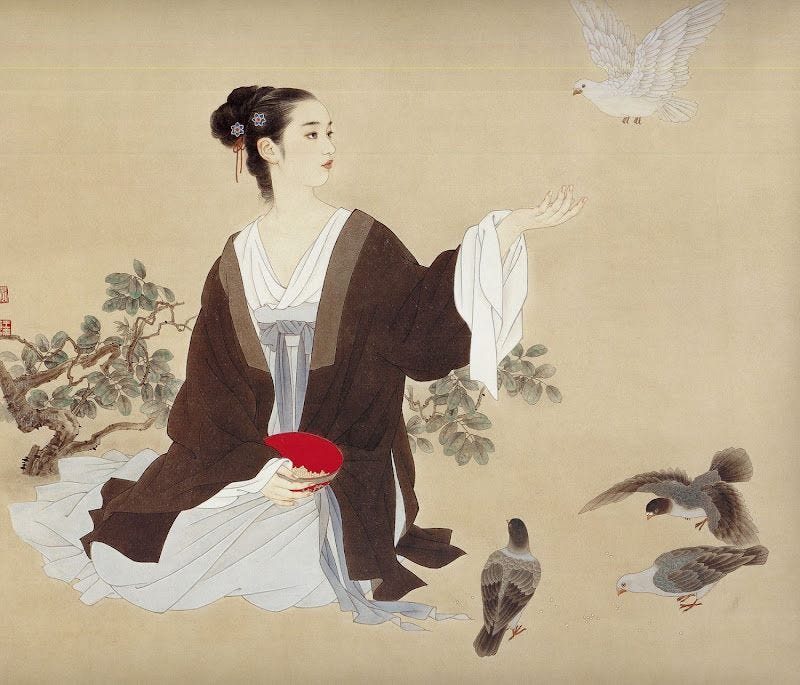The lexicology of yan 顏
Because I know that you are obstinate, and your neck is an iron sinew and your forehead brass… (Isa 48:4)
‘The term “face” keeps cropping up in our conversation, and it seems such a simple expression that I doubt whether many people give it much thought,’ wrote novelist Lu Xun 鲁迅 in the year 1934, in his essay ‘On Face’. He goes on:
‘Recently, however, we have heard this word on the lips of foreigners too, who seem to be studying it. They find it extremely hard to understand, but believe that “face” is the key to the Chinese spirit and that grasping it will be like grabbing a queue twenty-four years ago—everything else will follow.’
This shows both how important the concept of ‘face’ is to the Chinese mentality (a concept which translates several terms in Chinese, including mianzi 面子, lian 脸 or, in more classical contexts, yan 颜). It also shows how easily the concept is either misconstrued, or else maliciously appropriated by Westerners, in an attempt to ‘grab’ the Chinese ‘queue’ (that is, to subjugate, control and exploit them). So when Lu Xun says that foreigners are so kindly interested in ‘giving China face’, what he’s really insinuating is that the foreign powers are robbing China blind while keeping up appearances.
Of course, Lu Xun satirises the entire concept of ‘face’ in ‘On Face’, noting how the traditional economy of social decorum and honour has in effect distorted people’s priorities and values. Different things are counted as shameful by different classes; rich and powerful people can avoid shame even when they bring shame to an entire army or an entire country. And he also wryly notes how ‘face’ is mutable simply by avoiding certain subjects or changing how they are referred to. (This is not something specific to Chinese culture, by the way.)
But economies of social honour (or at least their recent, living memory) are still something shared between West Asia and East Asia; in the West, economies of social honour are relegated to memories of the Middle Ages. In Chinese, if you are described as hou lianpi 厚脸皮 or hou yan 厚颜 ‘thick-faced’, that is not a compliment. It signifies that you are ‘shameless, brazen, without proper feeling’. In Arabic, there is a similar expression: jabhat qawiyya جبهة قوية, ‘a strong forehead’; and a similar concept exists in the Hebrew language: ‘āzzût mēṣaḥ עזות מצח ‘a hard (or bold) forehead’. Both Semitic phrases are not complimentary: they express a brazen lack of shame.
And intriguingly, the Chinese word yan 顏 originally connoted… the forehead!
In modern Chinese, the ‘forehead’ is etou 额头. The character yan 颜 is preserved but largely relegated to compounds like hou yan 厚颜 mentioned above; yanse 颜色 ‘colour’; yanliao 颜料 ‘paint’; yanmian 颜面 ‘face’; hongyan 红颜 ‘rosy-cheeks, pretty faces, pretty young women’; and kaiyan 开颜 ‘to smile, (to put on a) happy face’. It is also used in a number of literary expressions and idiomatic compounds, like wuyanliuse 五颜六色 ‘variegated, colourful’.
Xu Shen categorises yan 顏 as a phono-semantic glyph, composed of a semantic ye 頁 ‘head, page’ and a phonetic yan 彥 ‘talent, capable person’. His explanation of its primary function is: mei mu zhi xian ye 眉目之閑也 ‘It is the fence and guardrail of the brows and the eyes.’ One sees here the necessary idea of a guarded expression! Modern etymologists seem to agree: Schuessler links this term to the Tibetan ngar ངར ‘front side’. Yet its first instances are not as the ‘face’ in general, nor the general ‘expression’—though these certainly are functions that it later attained! Rather:
子之清揚、揚且之顏也。
展如之人兮、邦之媛也。Clear are her eyes; fine is her forehead;
Full are her temples!
Ah! such a woman as this!
The beauty of the country!(Odes 《詩經》, Odes of Yong 鄘風, ‘The Husband’s to Old Age’ 君子偕老 3)
Note that yan 顏 here clearly refers to a part of this beauty’s face that is prominent and ‘clear’ (qing 清) when the head is lifted (yang 揚), and not to the whole face. That is to say: the functionality of ‘forehead’ is present in the original text; it is not an invention of the translator. Even at an early date, though, the word already had multiple functions. In the Documents, yan 顏 already carries the expanded secondary function of ‘face’, both the physical face and the social ‘face’ commented on by Lu Xun: 「郁陶乎予心,顏厚有忸怩。」 ‘Anxieties crowd together in our hearts; thick as are our faces, they are covered with blushes.’ (Documents 《尚書》, Book of Xia 夏書, ‘Songs of the Five Sons’ 五子之歌 6). Note well that the fifth son is calling himself and his brothers ‘thick-faced’ in the modern sense! In the Changes and in the Rites, the same Yan 顏 is present as a family surname: Confucius’s favourite student was named Yan Hui 顔回, also styled Yan Yuan 顔淵.
The similarity in functionality between the Sinitic yan 顏 and the Semitic triliteral root m-ṣ-ḥ מ-צ-ח is close enough to bear careful scrutiny. The link between the physical forehead and a sense of bearing responsibility for iniquities (‘āwen עון) is attested directly in the Book of Exodus. Remember, this is the same Aaron who constructed the golden calf, who is being instructed to put an engraved golden emblem upon his forehead:
והיה על־מצח אהרן ונשׂא אהרן את־עון הקּדשׁים אשׁר יקדּישׁוּ בּני ישׂראל לכל־מתּנת קדשׁיהם והיה על־מצחו תּמיד לרצון להם לפני יהוה׃
It [the priestly turban] shall be upon Aaron's forehead, and Aaron shall take upon himself any guilt incurred in the holy offering which the people of Israel hallow as their holy gifts; it shall always be upon his forehead, that they may be accepted before the Lord. (Exo 28:38)
Elsewhere in the Tanakh you see the term mēṣaḥ מצח used to connote shamelessness, especially brazen shamelessness. The classically-Hellenistic hubris of Goliath, disdaining the youth and good looks of the shepherd-boy he faced in battle, is met with a stone that sank into his forehead (1Sa 17:49)! When Uzziah (= ‘Uzzîâ עזיה ‘my strength is YHWH’!) uses his kingly authority brazenly to usurp the priest of the Lord and enter the Temple, it is his forehead that is smitten with leprosy (2Pa 26:16-21). Isaiah rebukes the obstinate children of Jacob, who have gîd barzel ‘ōrefek גיד ברזל ערפך ‘a neck of iron sinews’ and miṣḥākā nǝḥûšâ מצחך נחושה ‘a forehead of copper’ (Isa 48:4). Jeremiah goes further and tells Israel that they have mēṣaḥ ’iššâ zônâ מצח אשה זונה ‘a harlot’s forehead’ (Jer 3:3). And God makes Ezekiel’s forehead hard against the hard foreheads of Israel (Eze 3:7-9), and later the foreheads of those who are ashamed, are marked (Eze 9:4) while all the rest in Jerusalem are slain.
The Greek word used to translate the Hebrew mēṣaḥ מצח in the LXX, metōpon μέτωπον, is found in the New Testament only in the Apocalypse of Saint John. The Ezekelian ‘mark upon the forehead’ is a recurring motif in the vision of Saint John, and if we are to understand it Semitically as a hearer of the Tanakh, it functions as the ability of the bearer of the mark to feel shame over their sins. Only such people will receive God’s mark upon their foreheads, to be spared. Note that the harlot Babylon is marked on her forehead (Apoc 17:5), with the opposite sign!
Now, in Arabic, the term maṣḥ مصح ‘forehead’ is very rarely seen in that function, and usually only in dialectical forms. Instead, the relevant term is jabha جبهة which functions in the Qur’ān in a rhetorical way parallel to (though with slight differences from) the Book of Ezekiel and the Apocalypse of Saint John. In Surah 9, especially the teachers and religious leaders who say they believe in Allāh, but actually shamelessly hoard wealth and spend it on themselves rather than caring for those in need, are punished by being branded on the forehead in Gehenna with the molten gold and silver that they hoarded for themselves on earth:
يا ايها الذين امنوا ان كثيرا من الاحبار والرهبان ليأكلون اموال الناس بالباطل ويصدون عن سبيل الله والذين يكنزون الذهب والفضة ولا ينفقونها في سبيل الله فبشرهم بعذاب اليم يوم يحمى عليها في نار جهنم فتكوى بها جباههم وجنوبهم وظهورهم هذا ما كنزتم لانفسكم فذوقوا ما كنتم تكنزون
O you who have believed, indeed many of the scholars and the monks devour the wealth of people unjustly and avert [them] from the way of Allāh. And those who hoard gold and silver and spend it not in the way of Allāh - give them tidings of a painful punishment. The Day when it will be heated in the fire of Hell and seared therewith will be their foreheads, their flanks, and their backs, [it will be said], ‘This is what you hoarded for yourselves, so taste what you used to hoard.’ (9:34-35)
Now, hear and understand. This literary text, like the Tanakh, was written in and for an honour-based society, so understand the function of the ‘forehead’ here. Even Moses could only see His back, and you cannot see God’s face. For you, God has no face. Social honour and shame are completely beyond Him—and He will not play word games with you over your attempts to manoeuvre within it or use it to your advantage. He’ll be laughing up the whole thing with Lu Xun alongside Him! You cannot see His face, therefore you cannot turn His face the way you want to turn it. And because this is so, the forehead of God is clean! Unlike the beauty described in the Odes of Yong, God is beyond compare, in no need of rich robes or makeup or wigs! His very appearance—not as a human appears, but from the scroll—puts to shame our foreheads!
So take care, Western man. Don’t fool yourself, don’t lie to yourself, don’t claim that you are pure, don’t put up your Geertzian fog of allegories and symbols and empty words, don’t hide behind your beloved and precious ‘markets’ and ‘norms’ and ‘institutions’ and ‘rules-based order’. DeepSeek just lit a stick of dynamite under all of that, and DeepSeek is only a machine. You’re not fooling anyone in the end. God alone is the Judge, and only His forehead is clean.
To Him alone be the praise. Al-ḥamdu li-Llāh al-Waḥidah, alaḏī ’ašraqat jabhatahu.
الحمد لله وحده الذي أشرقت جبهته












